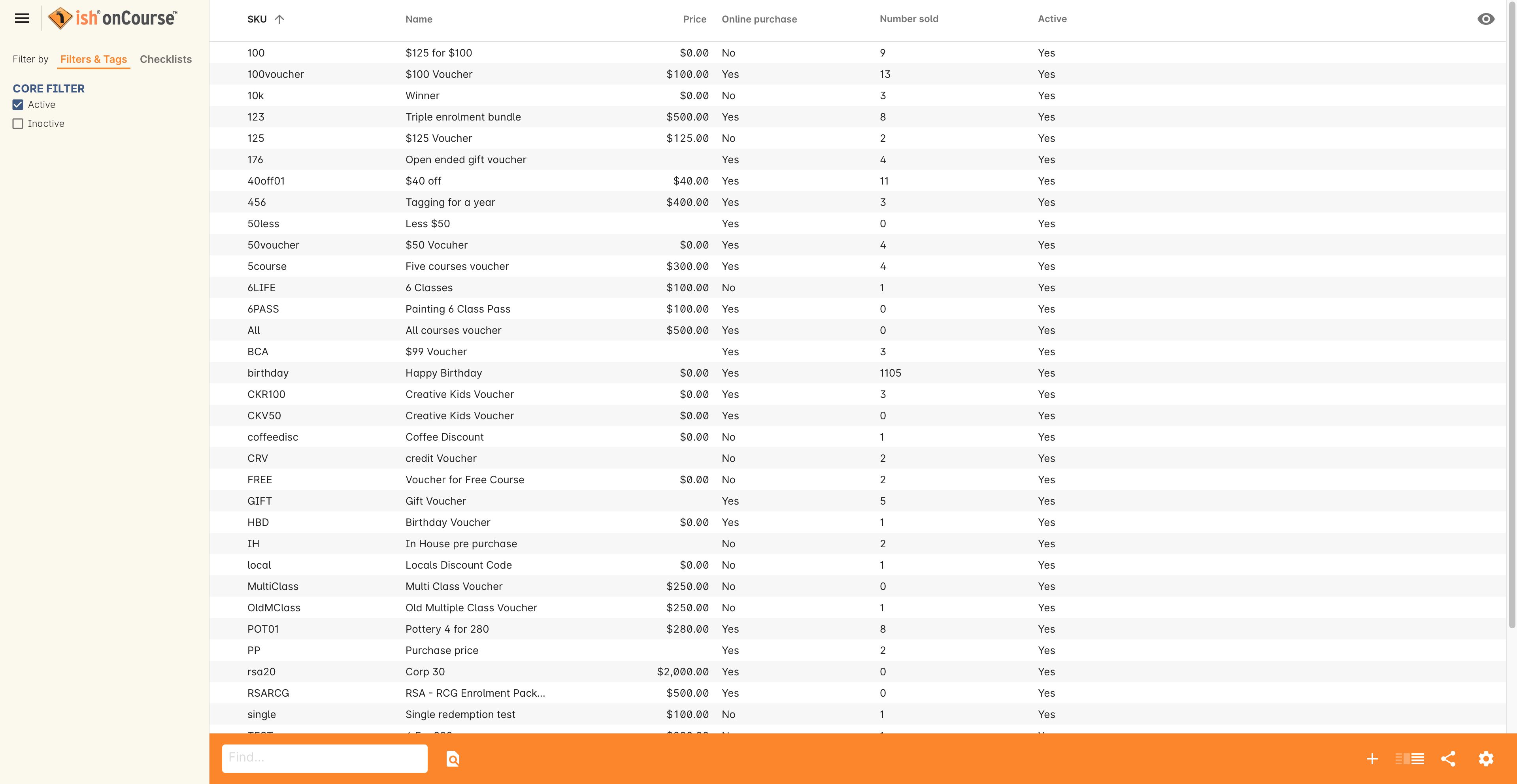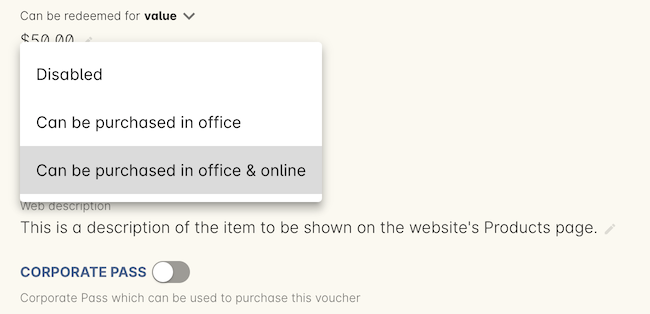Creating a voucher type
For most cases when a user wants to buy a voucher, they will nominate the price they wish to purchase the voucher for, and that the price will also be the redemption value of the voucher.
(Type 1) This type of voucher product will be created by default for all onCourse instances and be called "Gift certificate". It will only be enabled if your College has the right license that enables this feature.
In addition, colleges can create other types of voucher products that are linked to enrolment permissions and these will have purchase prices fixed by the college. Some of these types of voucher products may also be available for sale on the website.
A voucher may be sold as part of the existing checkout process or it may be given away for free (sold with 100% discount). Either way, an email is sent to the payer with the details of that voucher (not the student since it may be a gift, if the student and the payer are different people).
Navigating around the Voucher Types List View
To open the voucher type window you can either use the Dashboard favourites links, type 'Voucher Types' into the dashboard search bar, or in the onCourse navigation menu under Products > Voucher Types.

Figure 178. View of the vouchers list view
To create a new voucher type simply click on the + icon in the bottom right hand side of the window and enter the information required.
New voucher records
There are a number of fields in a voucher record. They include:
- SKU - this refers to a stock-keeping unit, a unique identifier for each distinct product and service that can be purchased. You can create whatever product code you want for any voucher.
- Name - allows you to name the voucher.
- Liability Account - allows you to choose the liability account you want the purchase price of the voucher to be deposited into until it is redeemed or expires
- Default voucher underpayment account - allows you to set the underpayment account for that voucher type. Is automatically derived from the account preferences set in preferences.
- Expiry date - this allows you to create a expiry date for the voucher from the date of purchase e.g. 365 days.
- Options for redemption - you can select whether you want the voucher to be able to be redeemed for an enrolment/s, for the purchased price or for different price.
If you want the voucher to be able to be redeemed for an enrolment you can leave the dropdown box as "enrolment in" as this is set as the default. You will need to choose how many enrolments you want it to apply to in the text box below. A voucher may allow for multiple enrolments in one course, an enrolment in choice of courses, or a mix of the two.
The section below this dropdown box will change depending on the choice you make. The range of fees for the selected courses is shown to help you discern the correct voucher price.
When you select 'enrolment in', switch on the Course button and then type in the name of the course/s you want to add. The more you type the more refined the auto-completion choices will become. To add a course from the list, click the 'add' button to the right of the course name, or you can click 'add all' to add all choice appearing in the selection window.
If you want to apply a voucher to more than one specific course then you can add each course one by one using the first option "Course" making sure you select OK after each course added.

Figure 179. View of the three options you can apply the voucher to.
A standard 'Gift voucher' type of voucher is redeemed for its purchase price. You can choose this option from the 'can be redeemed for' drop down menu.
If you want it to be redeemed for a different price than the one purchased for then select "value" from the drop down menu and choose the amount it will be redeemed for. This would usually be more than the purchase price, not less.
The last lot of fields on a voucher record let you set the rules of where the voucher can be purchased and the data collection rule it uses when purchased online. The choices allow for purchasing to be disabled entirely, purchased in the office, or purchased both in the office and online. You can also add a more in depth description that will be displayed on the website (as long as both check boxes are selected) in the Web description field.

Figure 180. View of the web tab in a new voucher type record
Updated over 1 year ago
